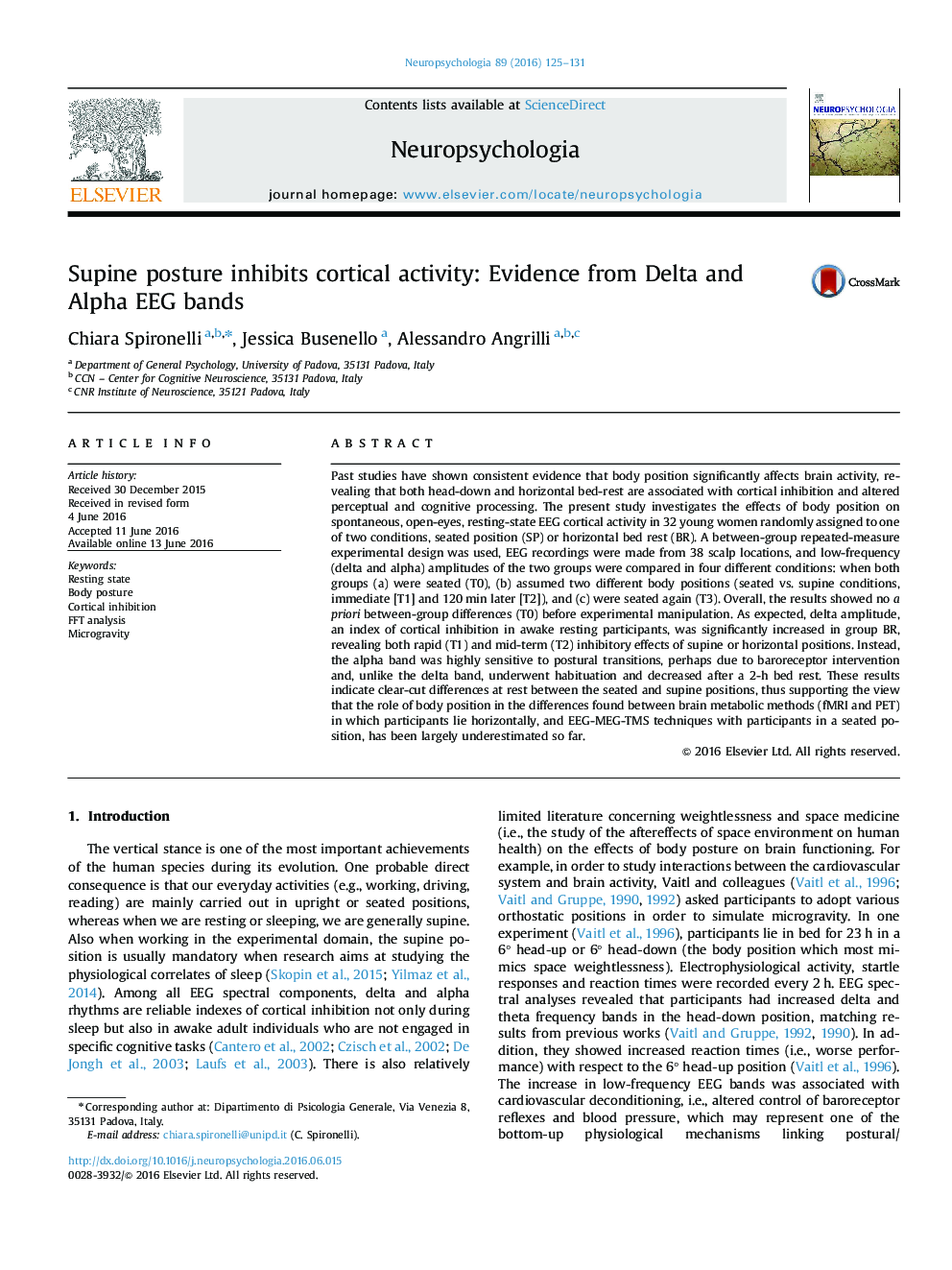| Article ID | Journal | Published Year | Pages | File Type |
|---|---|---|---|---|
| 7318677 | Neuropsychologia | 2016 | 7 Pages |
Abstract
Past studies have shown consistent evidence that body position significantly affects brain activity, revealing that both head-down and horizontal bed-rest are associated with cortical inhibition and altered perceptual and cognitive processing. The present study investigates the effects of body position on spontaneous, open-eyes, resting-state EEG cortical activity in 32 young women randomly assigned to one of two conditions, seated position (SP) or horizontal bed rest (BR). A between-group repeated-measure experimental design was used, EEG recordings were made from 38 scalp locations, and low-frequency (delta and alpha) amplitudes of the two groups were compared in four different conditions: when both groups (a) were seated (T0), (b) assumed two different body positions (seated vs. supine conditions, immediate [T1] and 120Â min later [T2]), and (c) were seated again (T3). Overall, the results showed no a priori between-group differences (T0) before experimental manipulation. As expected, delta amplitude, an index of cortical inhibition in awake resting participants, was significantly increased in group BR, revealing both rapid (T1) and mid-term (T2) inhibitory effects of supine or horizontal positions. Instead, the alpha band was highly sensitive to postural transitions, perhaps due to baroreceptor intervention and, unlike the delta band, underwent habituation and decreased after a 2-h bed rest. These results indicate clear-cut differences at rest between the seated and supine positions, thus supporting the view that the role of body position in the differences found between brain metabolic methods (fMRI and PET) in which participants lie horizontally, and EEG-MEG-TMS techniques with participants in a seated position, has been largely underestimated so far.
Related Topics
Life Sciences
Neuroscience
Behavioral Neuroscience
Authors
Chiara Spironelli, Jessica Busenello, Alessandro Angrilli,
